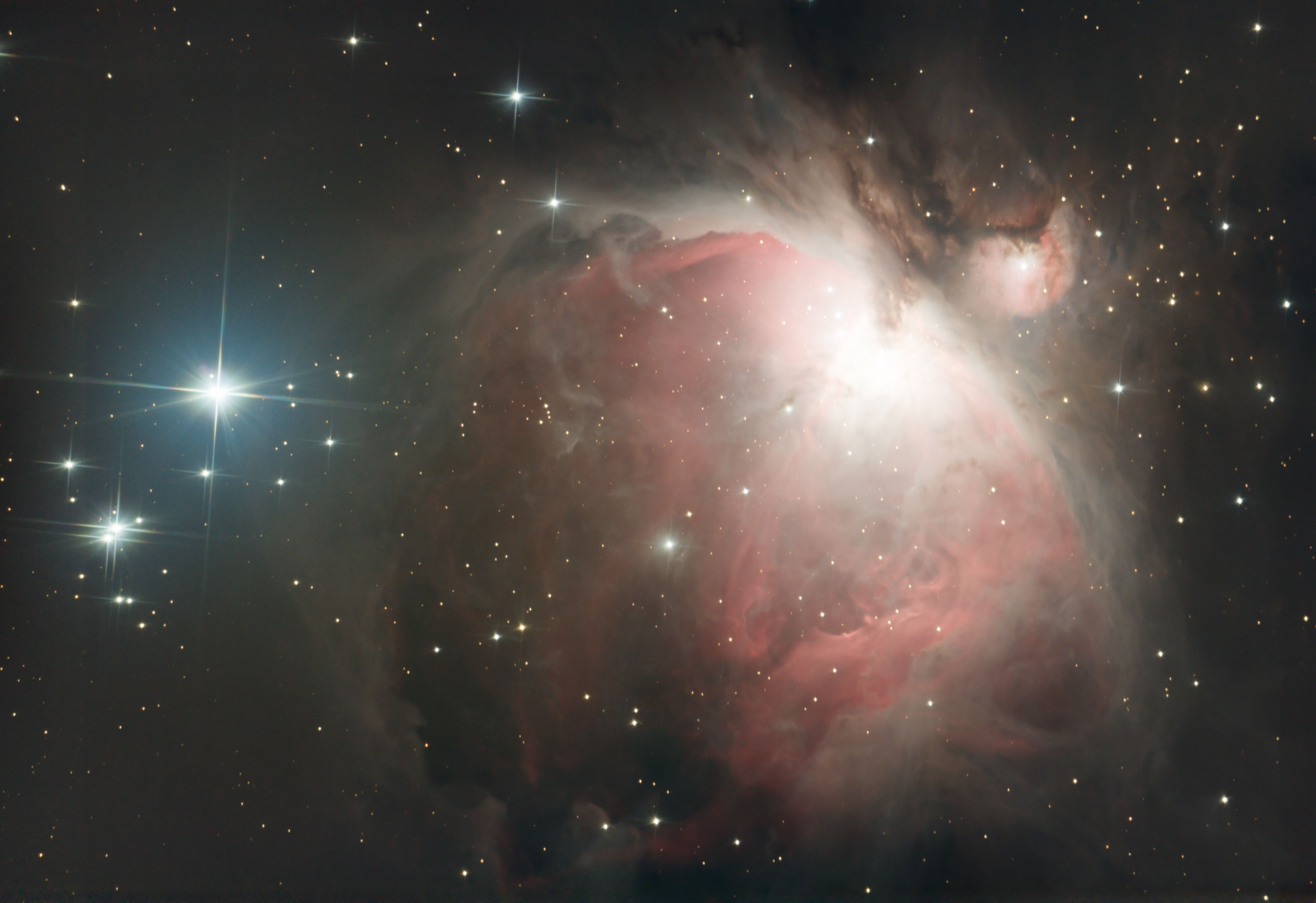
View on Flickr: https://www.flickr.com/photos/156021928@N02/53518058814
About M42
The Great Nebula in Orion, also known as M42, is one of the most fascinating celestial objects in the night sky, celebrated for its beauty, complexity, and significance in astronomical studies. This vast stellar nursery, located approximately 1,344 light-years away in the constellation Orion, is a place where new stars are born, offering scientists a window into the processes of star formation and evolution. What makes the Orion Nebula so cool is not just its visually stunning appearance, with glowing gases and newborn stars, but also its accessibility to observation. It can be seen with the naked eye under dark skies and is a favorite target for amateur astronomers and powerful telescopes alike. The nebula is home to a rich tapestry of interstellar material, including dust, hydrogen gas, plasma, and an array of young, hot stars clustered at its core, known as the Trapezium. These elements interact in complex ways, illuminated by the intense ultraviolet light from the young stars, creating a spectacular display of color and light. The Orion Nebula serves as a laboratory for understanding the life cycle of stars, from their dusty beginnings in nebulae to their ultimate fates, making it a cornerstone of astrophysical research and a captivating subject for anyone intrigued by the mysteries of the universe.
Acquisition
M42 sits a bit lower in the sky this time of year, and so I had a narrow window between sunset and the target getting too low in the sky. Fortunately, M42 is so bright that the small amount of data I was able to capture was plenty. This was one of the first images I took remotely from the observatory in its new home, so I was still working out some of the kinks. One of the things I got right was finally figuring out the focus module in ekos, and so the focus in this shot is perfect (in my opinion at least).
Since taking the image, we’ve raised the telescope in the observatory a bit, so I should be able to get data on M42 later in the night and add more data to the image. I’d also like to start capturing flat frames to improve the calibration, particularly with shots like this where the nebula covers the entire image it can be hard to get good background samples for dynamics background extraction.
Image Details
- Light Frames: 51 frames, 50 seconds exposure per frame, 1600 ISO
- Dark Frames: 40
- Bias Frames: 50
- Flat Frames: None
Pixinsight Workflow
- Color Calibration
- Dynamic Background Extraction
- Histogram Transformation
- Extract Luminance Layer and Darken
- LRGB combination to add saturation
- Ez-Denoise Script